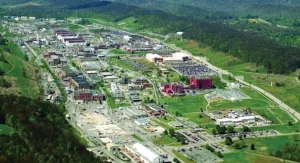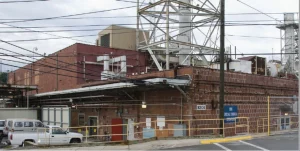Fostering Asset Reliability from the Floor Level
Paul Durko, Consolidated Nuclear Security LLC.
Conventional road maps and training indicate more than 70 percent of reliability initiatives fail because the programs supporting them lack backing by senior leadership. However, an equally significant aspect that can quickly undermine program success is the absence of buy-in from craft workers. Such was the case at the Y-12 National Security Complex, a U.S. Department of Energy National Nuclear Security Administration facility. Here’s how the facility turned things around by cultivating asset reliability from the floor level.
At Y-12, more than 250 craft workers support the site, completing an average of 33,000 work orders annually. Over the years, Y-12 has only made modest gains in asset reliability because its considerable size and multiple missions have made sustaining an effective reliability strategy difficult. The site spans 811 acres, with 2-1/2 miles between its east and west boundaries. Some of the more than 300 facilities are categorized as nonnuclear facilities.
Background
Y-12 was constructed in Oak Ridge, Tennessee, as part of the Manhattan Project to provide enriched uranium for Little Boy, the atomic bomb dropped on Hiroshima, Japan, to facilitate the end of World War II. Afterward, Y-12 provided lithium separation and key components for the thermonuclear weapons that helped end the Cold War. Y-12’s expertise in machining, handling and protecting radiological materials has made the site central to the nation’s nuclear security.
Because Y-12 was built from a tactical perspective, ensuring asset reliability on numerous aged facilities and processes presents a unique and complex challenge. Many of the advantages of standardization routinely found in a manufacturing environment, such as identical process lines, fan and motor configurations, and instrumentation, are nonexistent at Y-12, where a long-term mission was not envisioned. Although stringent processes are in place to ensure safe operation of the nuclear facilities and equipment, understanding and ensuring asset health across the site remains tenuous.
Maintenance Feedback Approach
Using a maintenance feedback approach, Y-12 partnered with its workforce to gain a better understanding of asset health across the site. The craft workforce presents the best opportunity to understand the health of a facility or asset because of their close proximity. In essence, they are the eyes and ears within the functioning plant.
Working with craft personnel, a process involving maintenance history, feedback and improvement was developed for corrective and preventive work activities to foster asset reliability. This continuous improvement process allows Y-12 to augment data in its computerized maintenance management system (CMMS).
Using maintenance history data, Y-12 can do the following:
- Spot emerging equipment trends;
- Pinpoint chronic issues with components, processes, etc.;
- Identify systemic issues and concerns;
- Forecast likely equipment failures;
- Develop a bill of material;
- Close the feedback loop to the initiator.


Figure 1 & 2: Aerial view and one of 300 facilities on the Y-12 site
Maintenance Data Collection Forms for Asset Reliability
To complete each work package, the craft worker must complete one of the data collection forms developed as part of the asset reliability process.
The Corrective Maintenance Form asks the craft worker to:
- Identify the components replaced. (This list is used to develop a bill of material.)
- Perform root cause analysis where practical.
- Determine failure versus symptom of unidentified failure modes.
- Assess the overall field condition of the asset from a systemic viewpoint.
The Preventive Maintenance Form asks the craft worker to:
- Describe the condition of the unit as found and its fitness after preventive maintenance.
- Determine the material requirements for the job kits.
- Identify optimization activities, such as task intervals, additional failure modes, augmented task instructions, etc.
- Note uncorrected or observed issues with the system or supporting systems.
The data collected on the forms are entered into the CMMS for review by Y-12’s Reliability and Maintainability Team and then segregated by issue into these categories:
1. Low rating with no comments;
2. Additional work required;
3. Scheduling of preventive maintenance or work package;
4. Scope of preventive maintenance or work package;
5. Materials reordering or bench stock needed;
6. Waiting for upcoming project work;
7. Lacking tools or equipment.
The maintenance engineer can then directly respond to the concern, develop a follow-on work order, create or augment a bill of material, or perform additional functions aimed at ensuring safe and efficient work execution.
Preliminary Benefits of Asset Reliability
Although the feedback process is still maturing, the return on investment in asset reliability has been exceptional. Since this process began in fiscal year 2015, issues in four of the seven categories (1, 3, 6 and 7) have declined steadily, while those in the other categories have remained somewhat stable. Craft workers are recognizing that the process is not only working, but also proving to be sustainable. The quality of their comments is steadily increasing, providing a distinct understanding of what drove them to give low ratings.
Another benefit of asset reliability is the improvement to the CMMS with more comprehensive maintenance data. This enhancement gives the supply chain management organization a high-level view of spare parts requirements, which contributes to the strategic planning of scheduled maintenance. Supply chain management is now responsible for ordering the preventive maintenance parts required for each job as part of the job kitting process developed two years ago. This change frees valuable time for the planner, plus craft workers benefit from the job kits since they eliminate having to search for parts required to execute the work.
Return of Ownership
Perhaps the most important benefit from this feedback process is the return of a sense of ownership at the floor level. As the craft workers’ trust in the asset reliability process evolves, the level of detail in the feedback advances and the asset health data expands, enhancing the usability of the information.
For instance, craft workers now have the capability to review open work orders against an affected asset in the CMMS or from printed versions. This capability prevents the craft worker from duplicating information previously submitted and it provides essential data that may impact the craft worker’s ability to completely perform the work required on that particular work order.
Developing and sustaining the maintenance feedback process was an essential springboard for Y-12’s preventive maintenance initiative. Clearly, craft worker engagement should not be underestimated, but should be viewed as important as senior leadership support.

Paul Durko
Paul Durko, CMRP, CMRT, RMIC, is the Manager of the Reliability & Maintainability (R&M) team at Consolidated Nuclear Security (CNS) LLC. His team is responsible for the development and implementation of the proactive maintenance program at both the Pantex and Y-12 sites.
Related Articles

How to Fix the 70/30 Phenomenon

Zen and the Art of Managing Maintenance

Why do maintenance improvement initiatives fail to deliver? (Hedgehog or Fox?)

Why Maintenance Improvement Efforts Fail

TPM and RCM: Whirled Class

Where Do Maintenance Professionals Come From?




